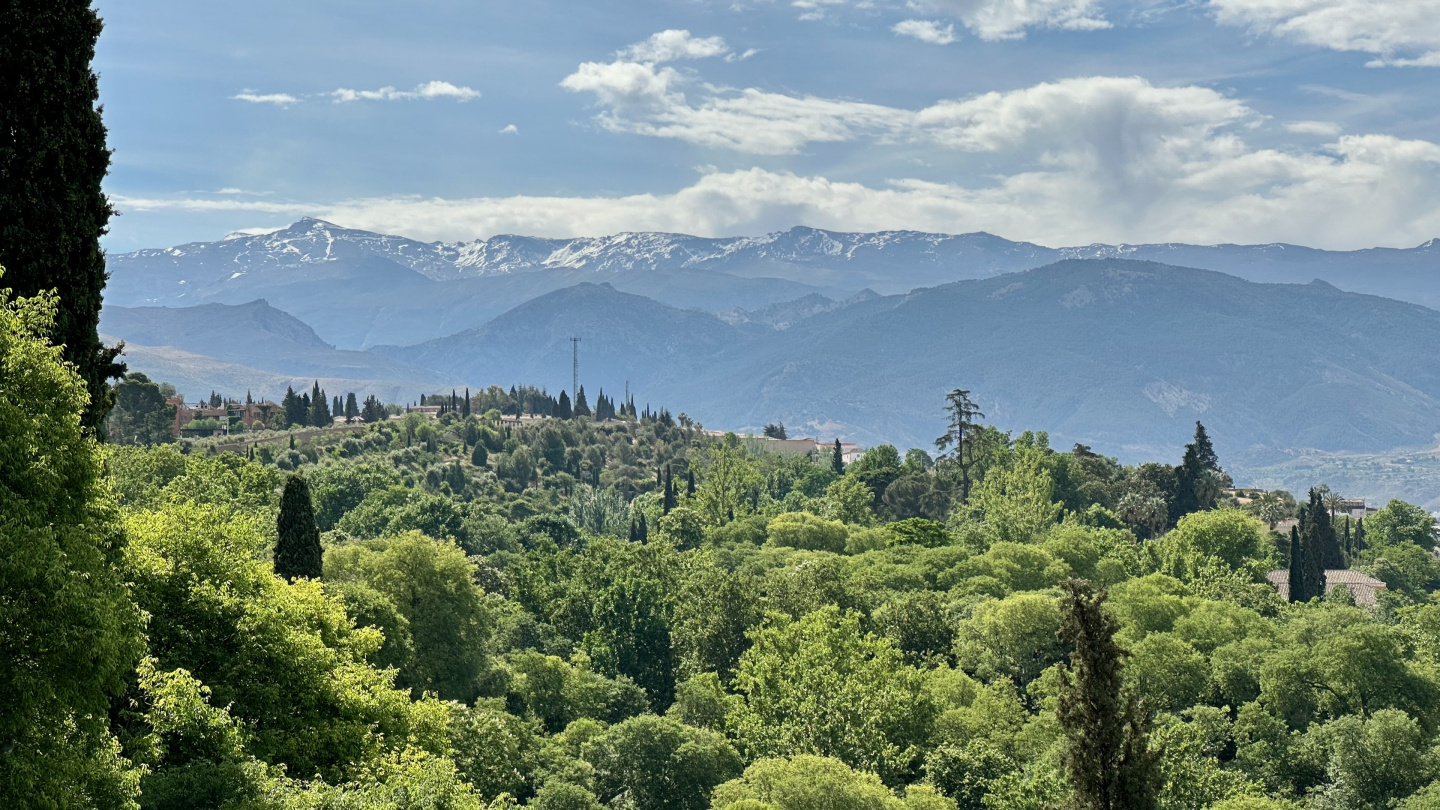From Córdoba, our road trip continued towards Granada. We chose the middle of three main routes to see more landscapes than driving between the sound barriers of the largest highway. Olive groves stretched uninterruptedly along the entire 175-kilometer journey. Now we know where the Spanish super good olive oil comes from.
Upon arrival in Granada, the heart of Andalucia, we were already at an altitude of 738 meters above the sea level. Granada is located at the foot of the Sierra Nevada mountains and yet only an hour’s drive from the sandy beaches of the Costa del Sol.
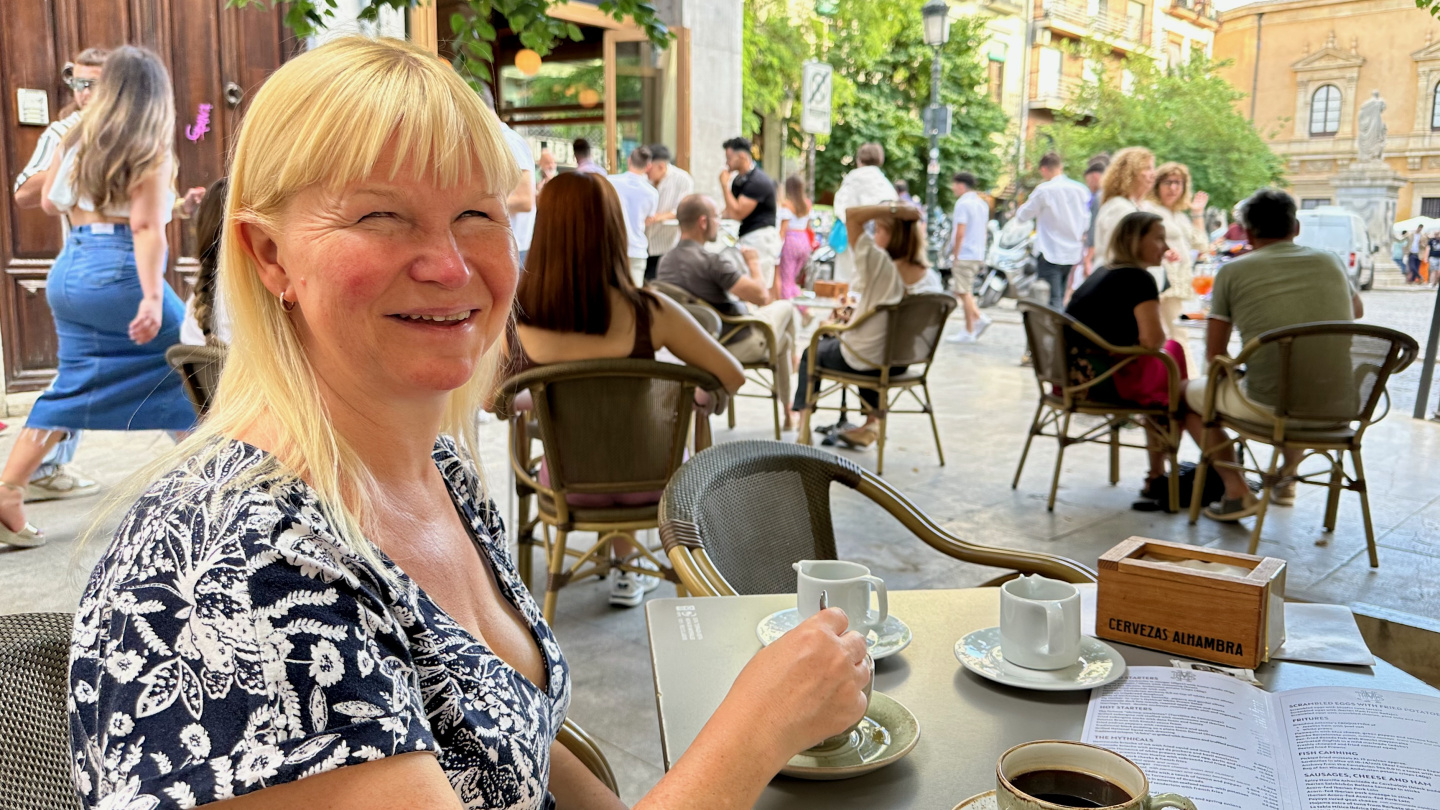
We realized we had arrived in the lush cradle of pomegranate and orange trees. It’s easy to understand why the city is called Granada, which means pomegranate in Spanish. We learned something new again, as orange trees have two types of leaves: single leaves or double leaves in a row. Single-leaf trees grow sweet oranges, while double-leaf trees produce bitter fruit, used for making marmalades and perfumes. Here is something for you to look out on your next travels!
After checking into a hotel for two nights in Granada, we eagerly set out to explore the city. The streets were filled with people of all ages. We happened to arrive in Granada during one of its biggest fiestas, Cruz de Mayo, the May Cross Festival, celebrated since 1625. People danced in traditional Andalucian dresses on the streets, and there were long lines for many festival events. We wandered through the streets and parks, admiring the floral decorations and enjoying the energetic festive atmosphere. Granada has over 200,000 inhabitants, a quarter of whom are university students, giving the city an unique youthful vibe.
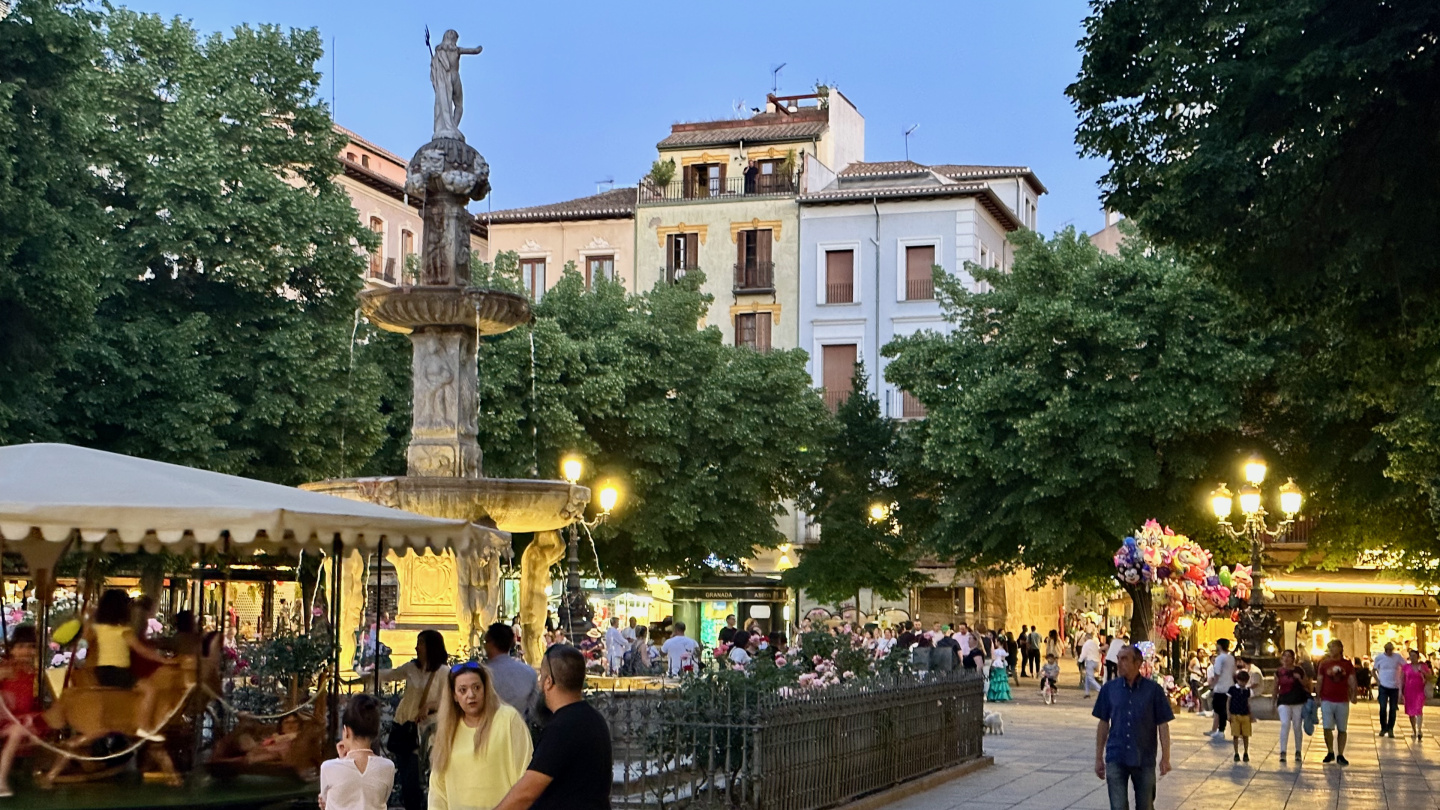
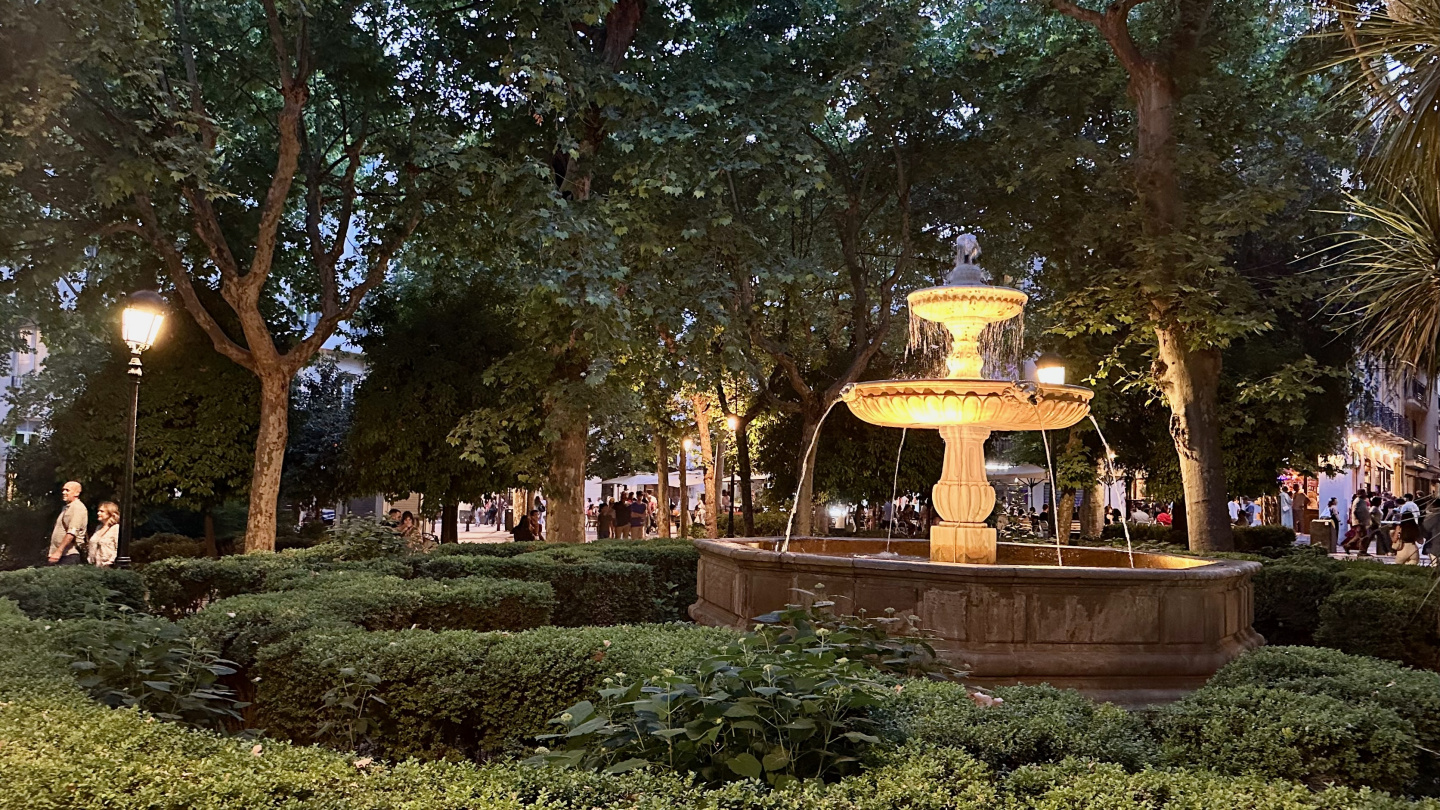
As tourists, we also got to enjoy Granada’s tapas tradition, which began in the 1800s, as we sat on a terrace to quench our thirst. In Granada, a tapas dish is served as a snack with your drink. A pub crawl can easily continue late into the night in this university city, as each drink is accompanied by a complimentary tapa

During our excursion in Granada, we also discovered a new, truly excellent beer, Alhambra Reserva 1925 in the green-bottle!
The next day, our main destination was the Alhambra fortress with its palaces and stunning gardens. Fortunately, we had booked earlier a four-hour guided walking tour of this legendary fortress city in advance, as the tickets are easily sold out for up to a month ahaed.
The Alhambra complex is covering 35 hectares and was built by the emirs of the Nasrid dynasty, the rulers of Granada, between 1238 and 1492. It includes several magnificent palaces and fortifications, along with breathtaking gardens and fountains. A guide is absolutely essential. As she guided us through different parts of the Alhambra, we heard numerous fascinating historical stories, and the past literally became alive.
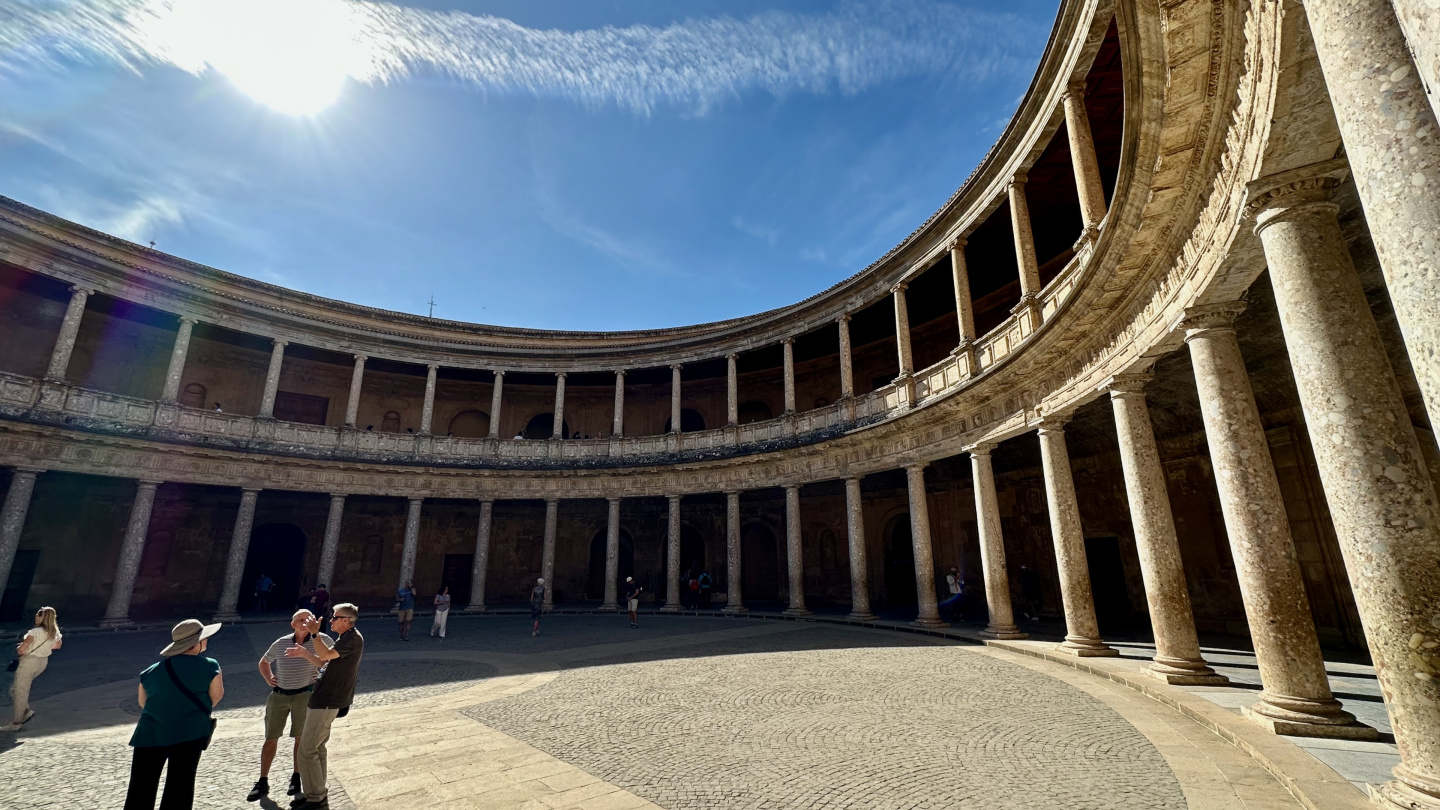
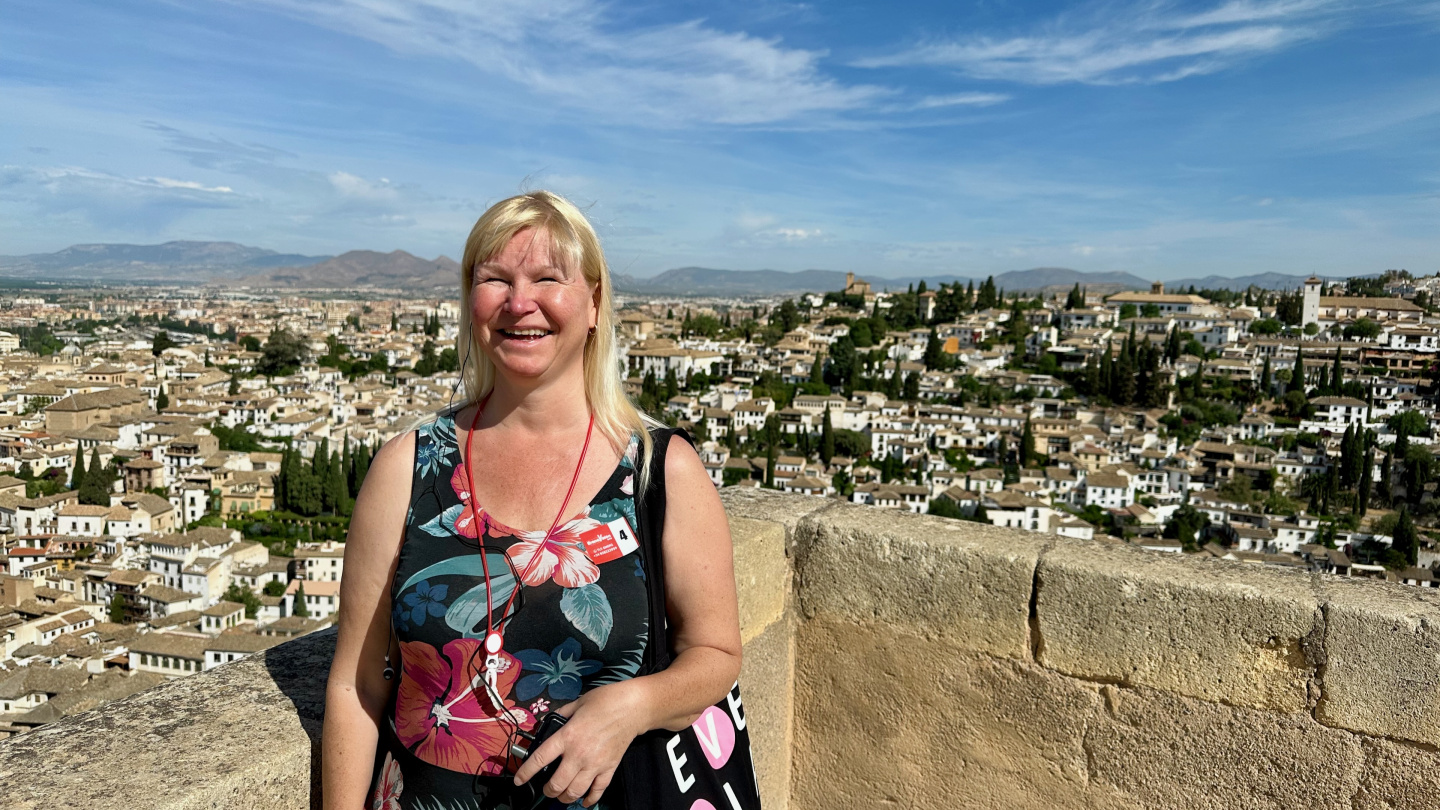
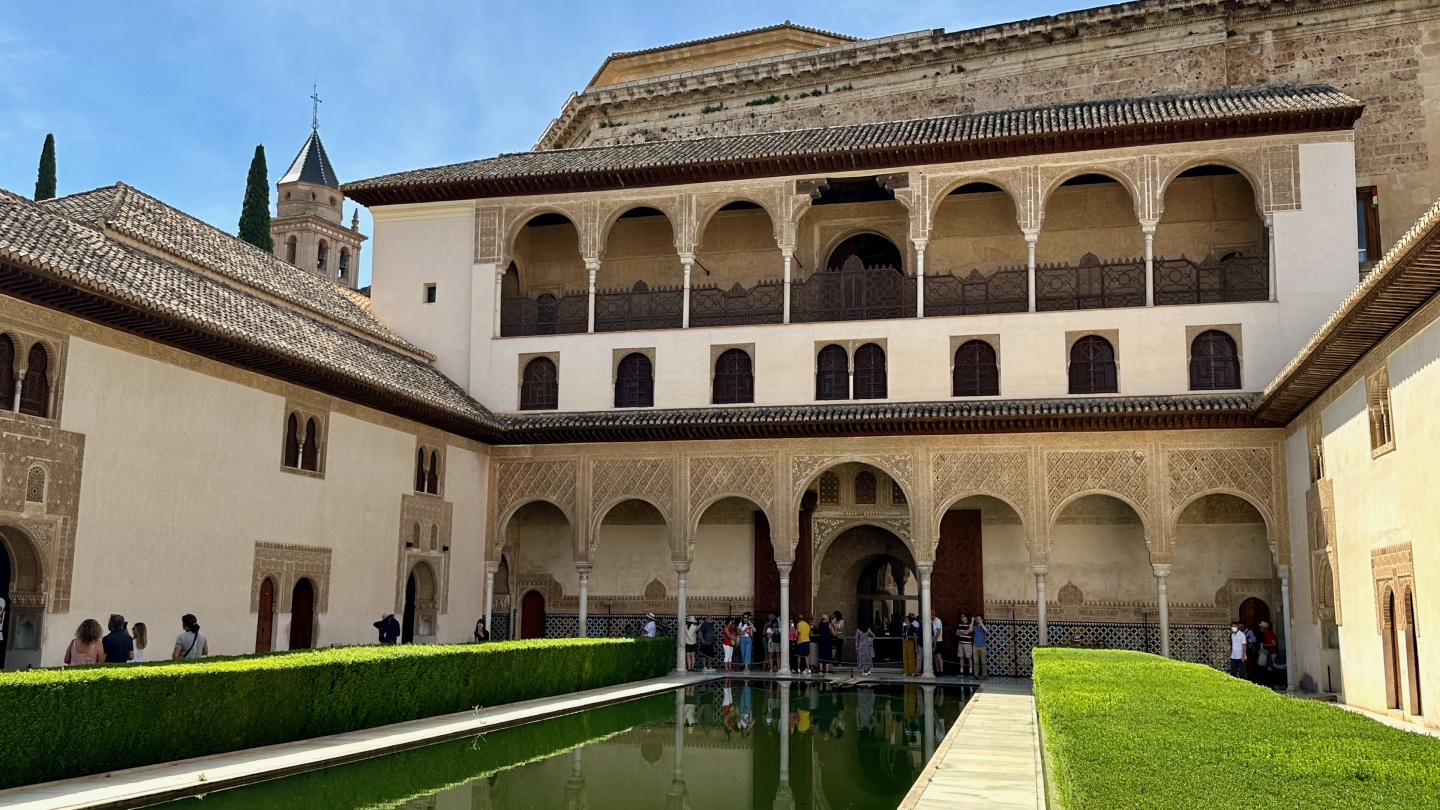
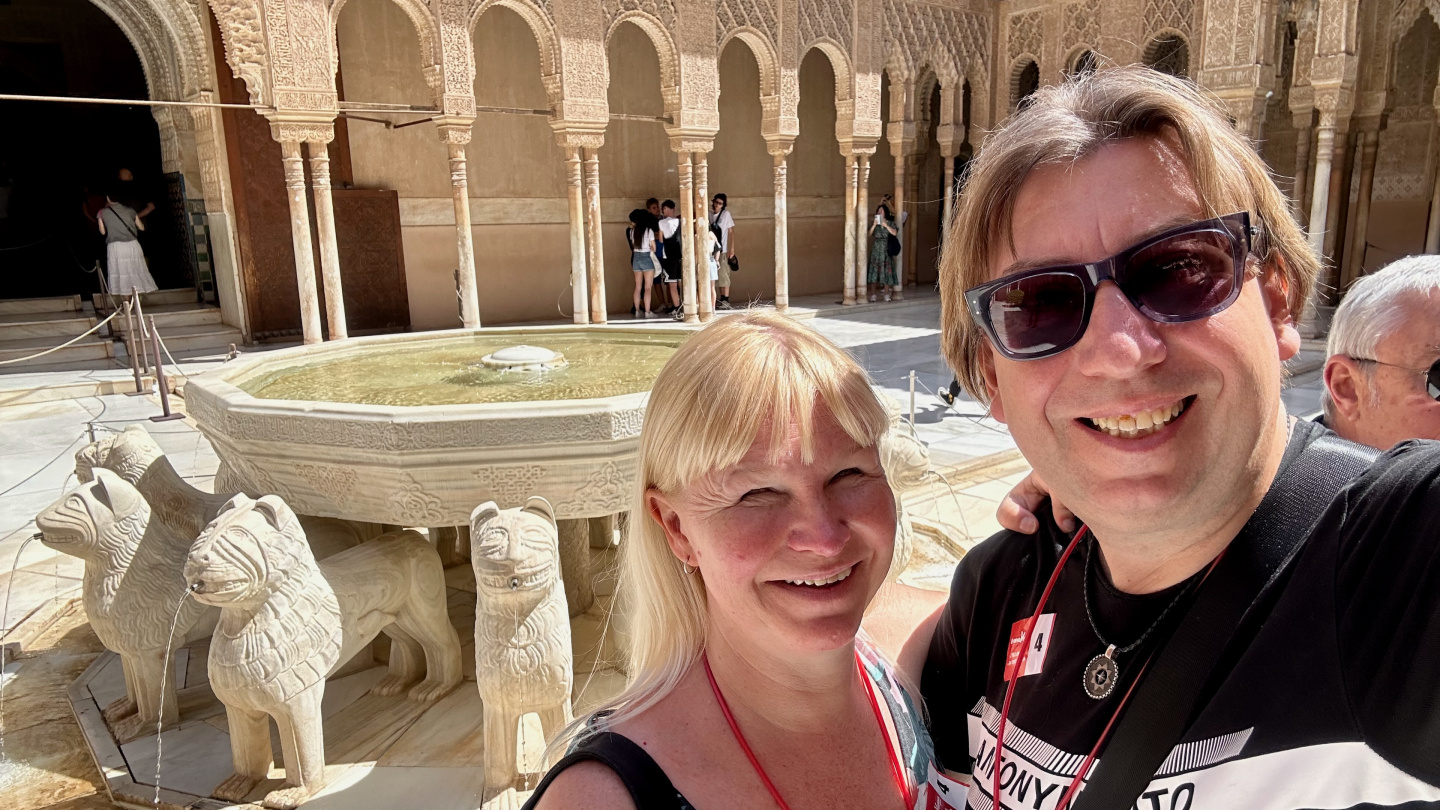
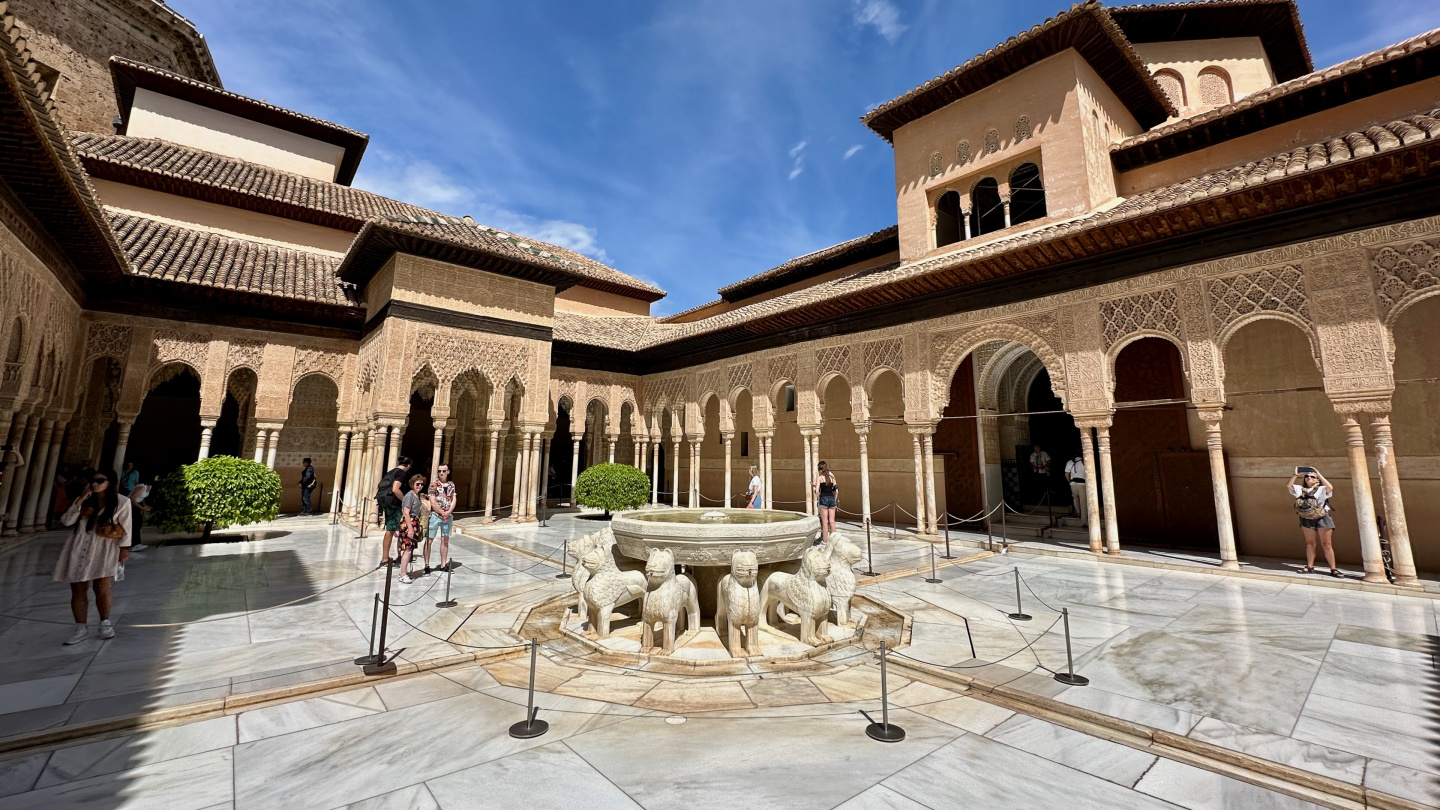
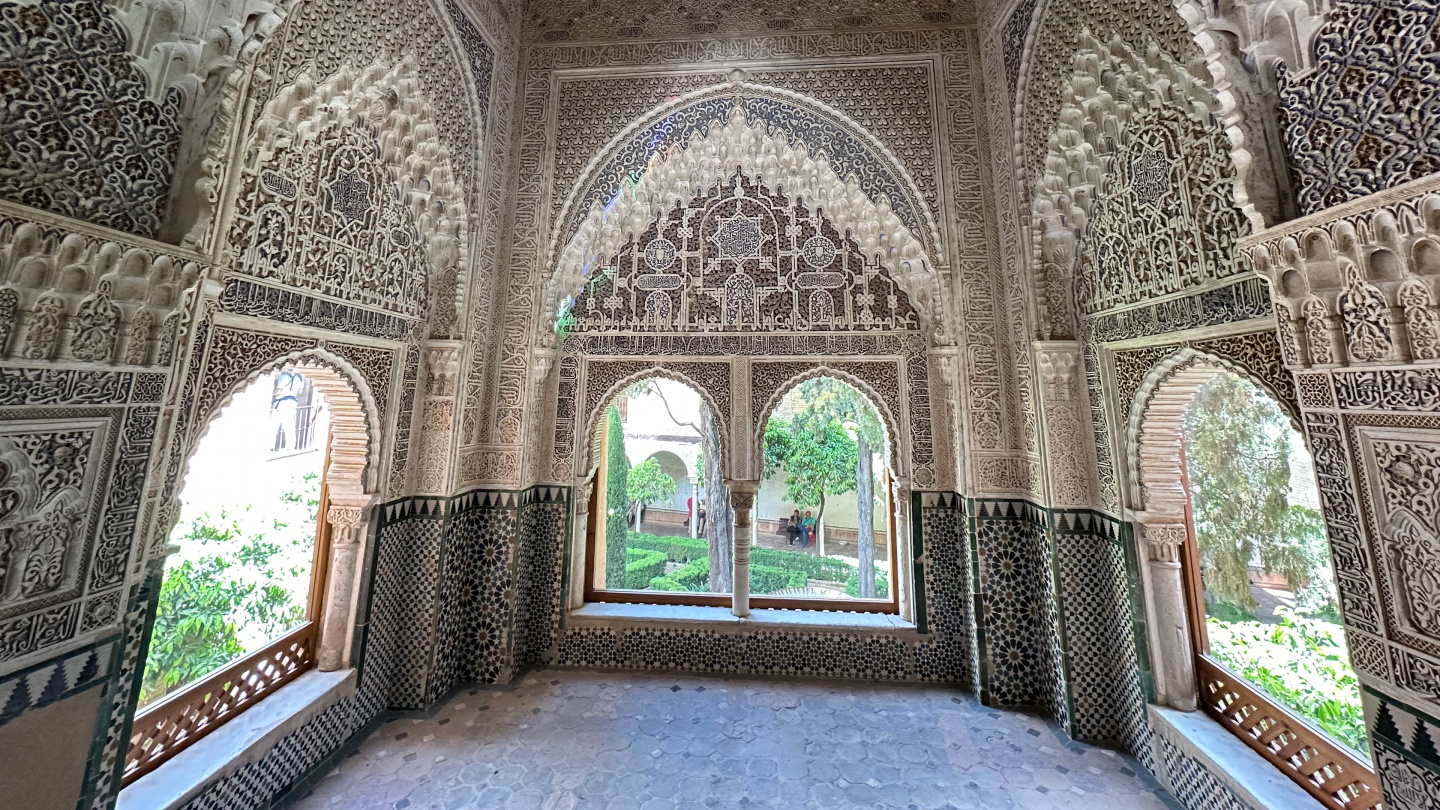
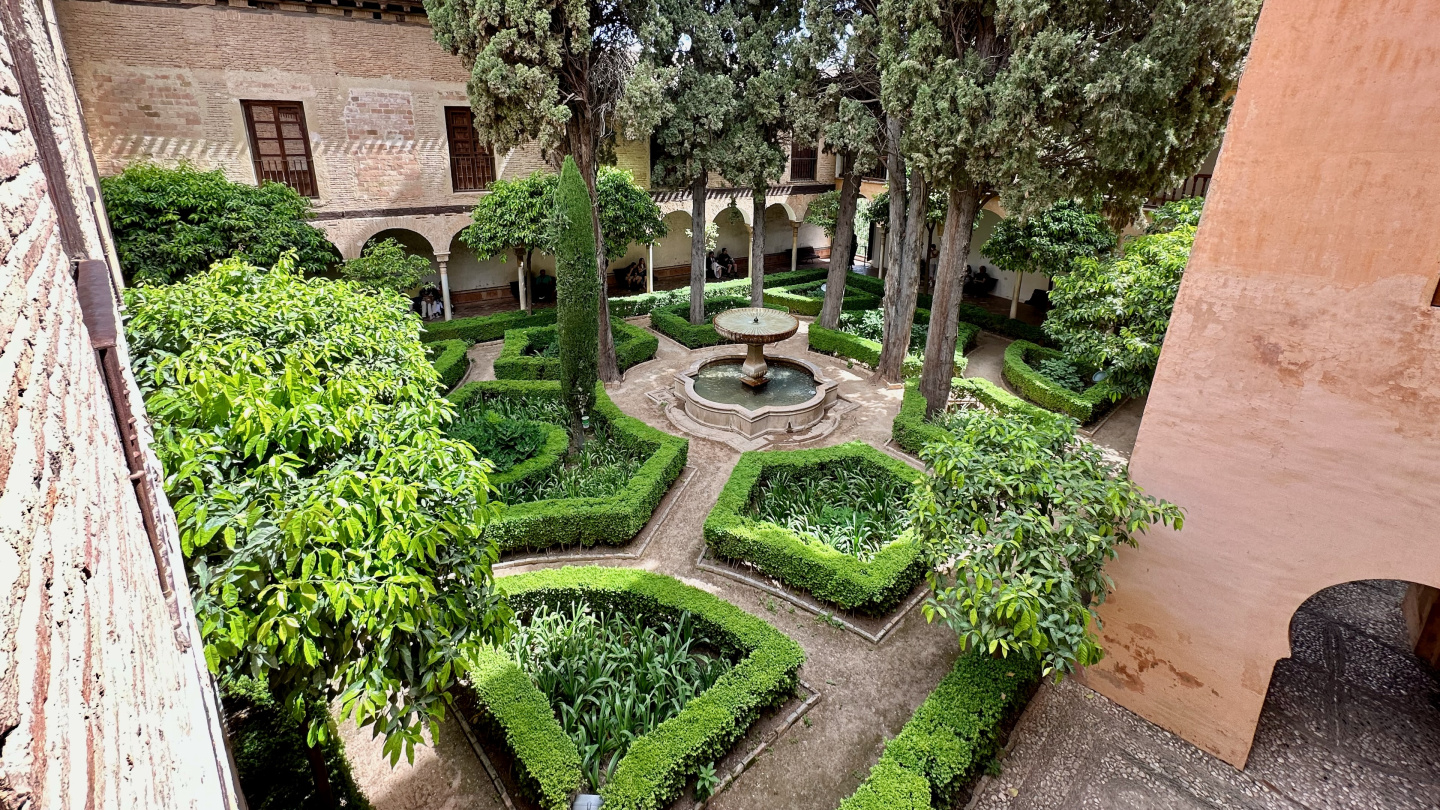
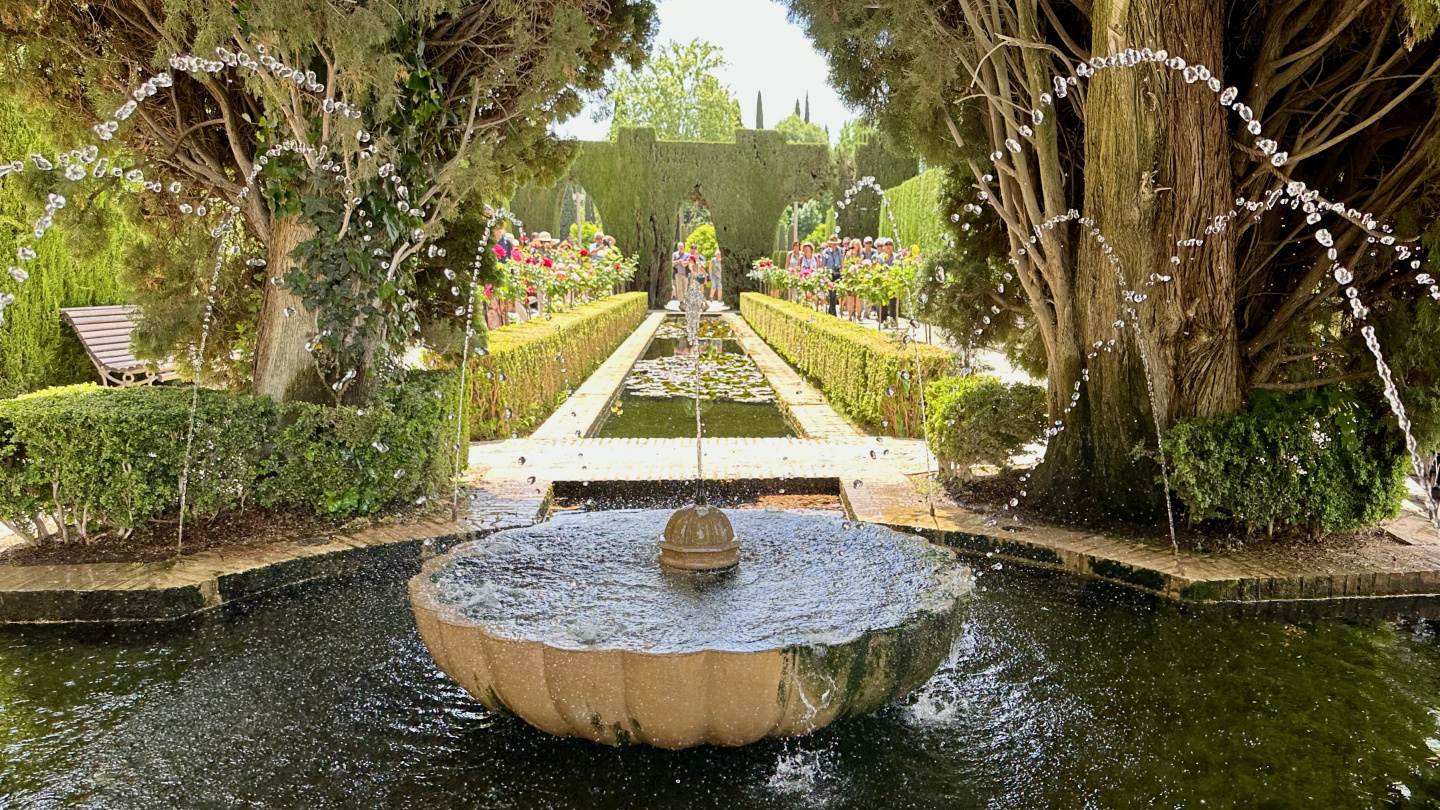
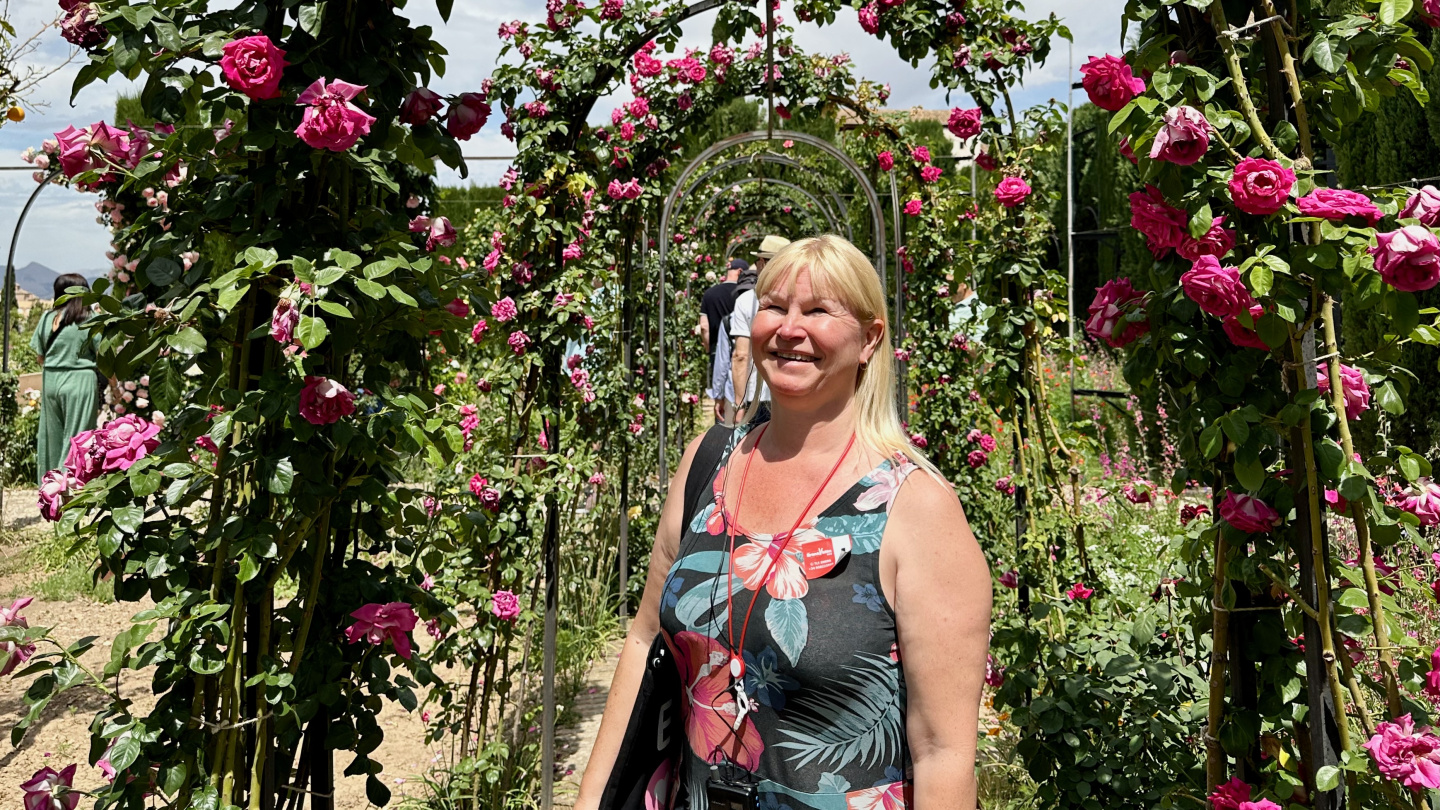
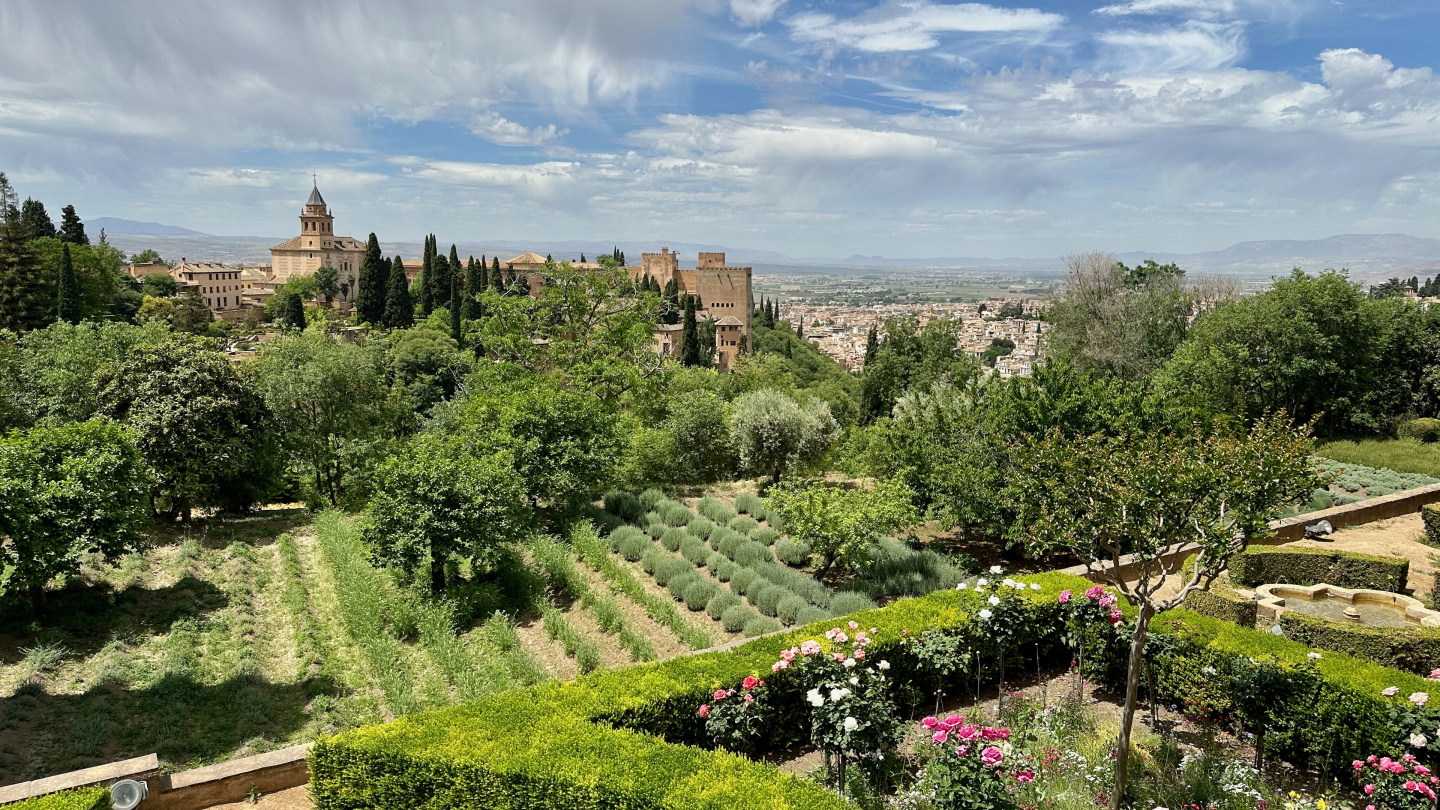
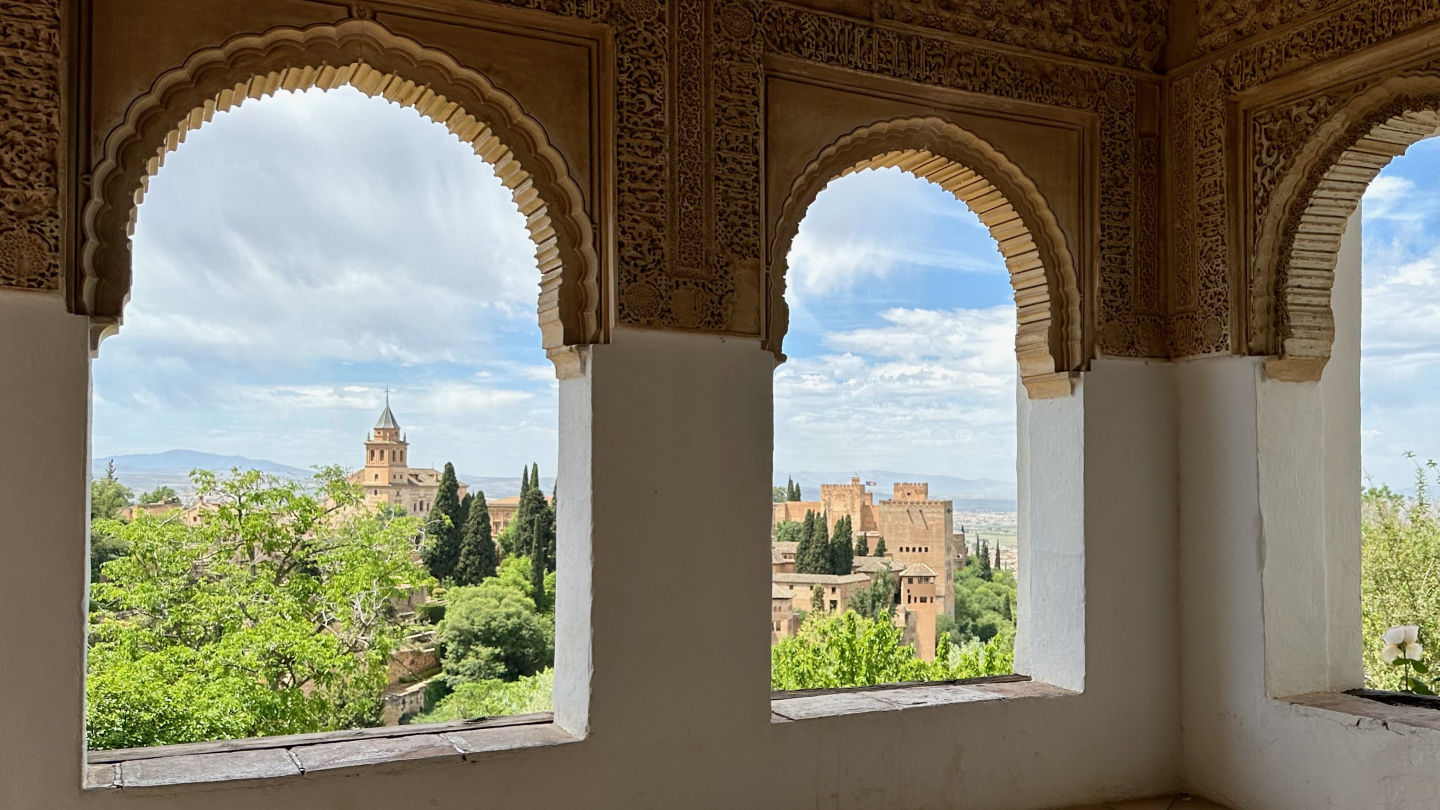
The views from the Alhambra are breathtaking, overlooking the entire city of Granada and the snow-capped Sierra Nevada mountains in the background, where we are heading the next day.
